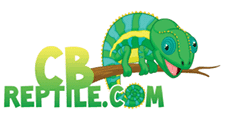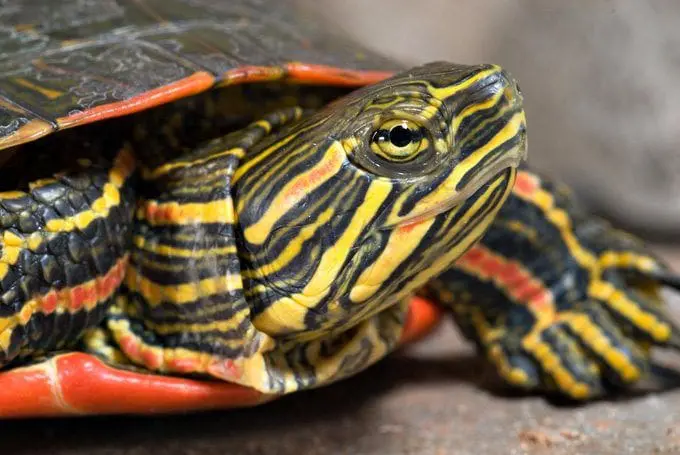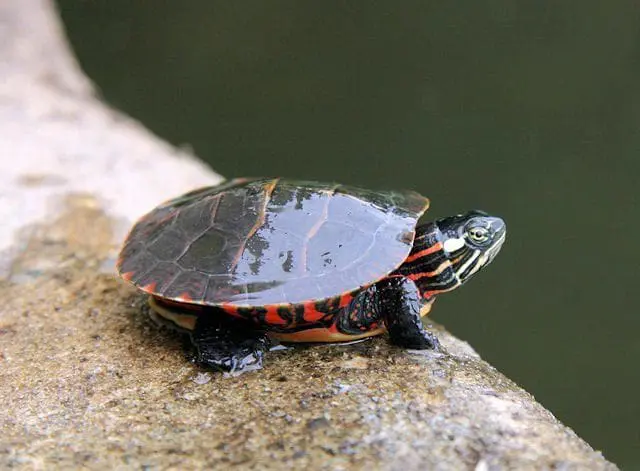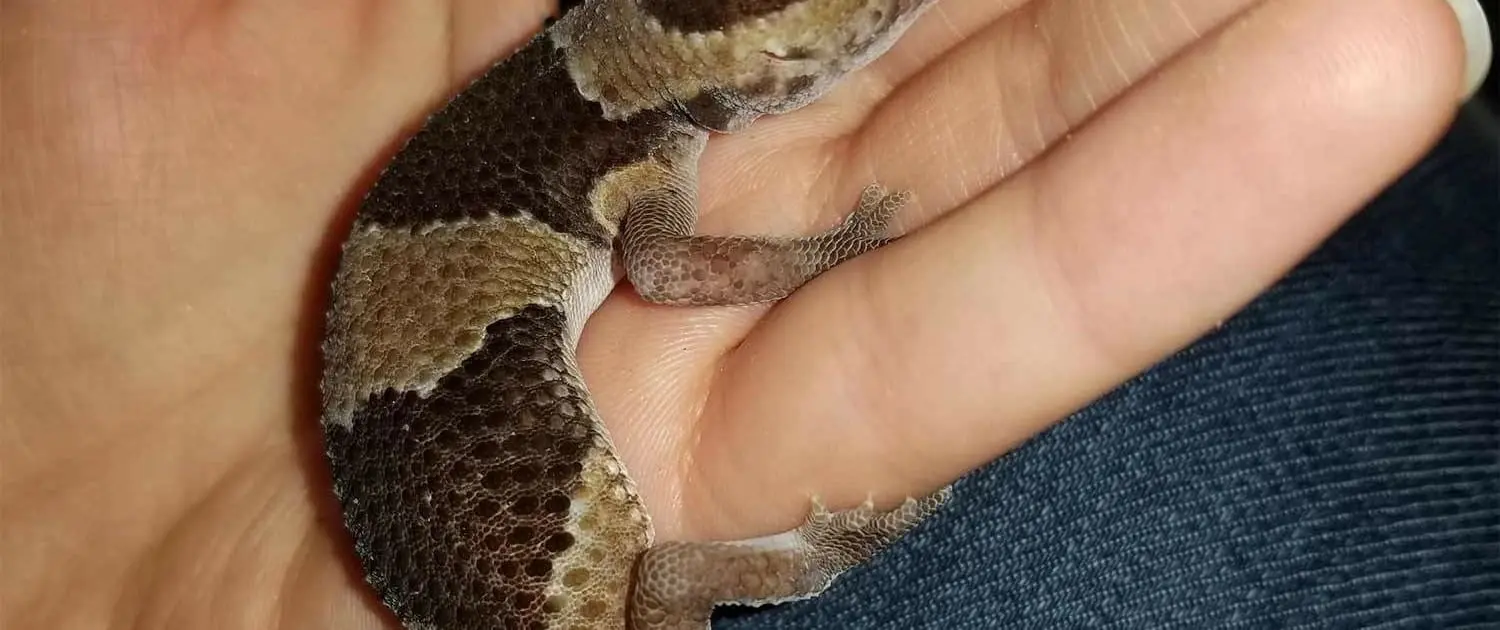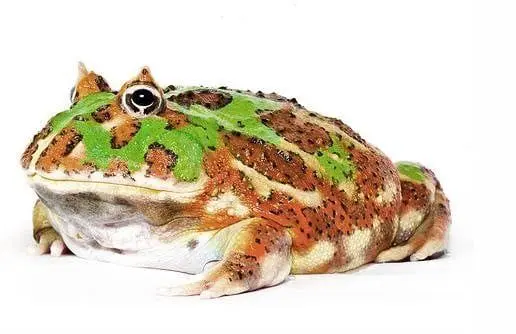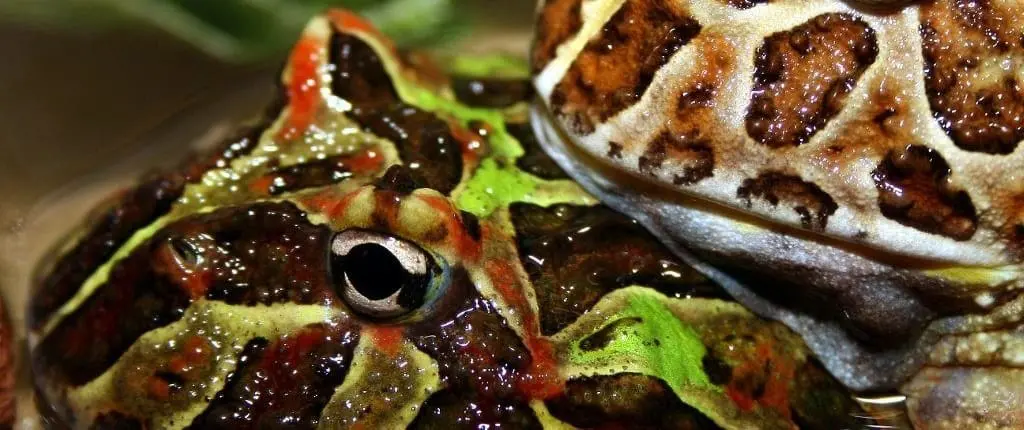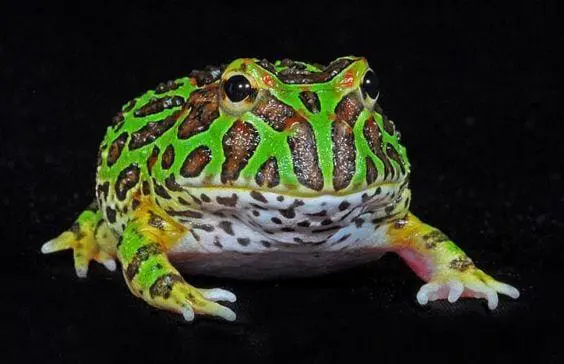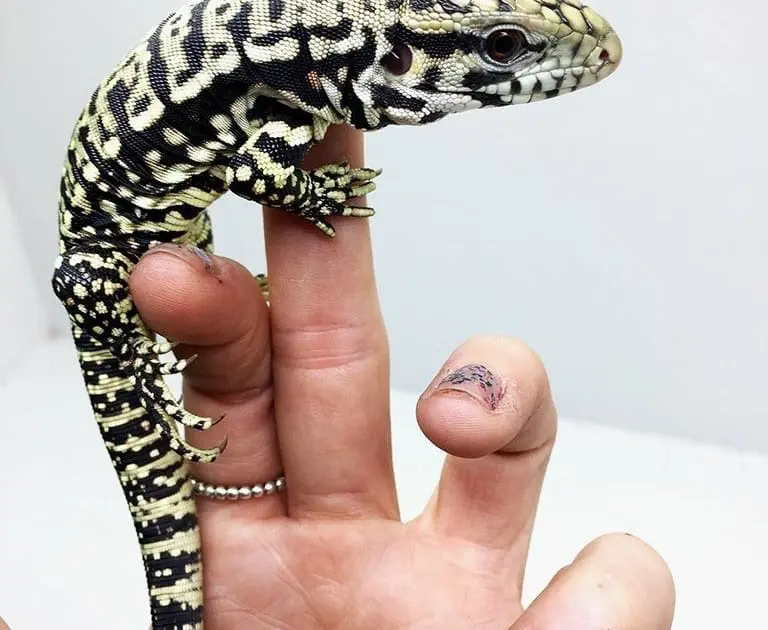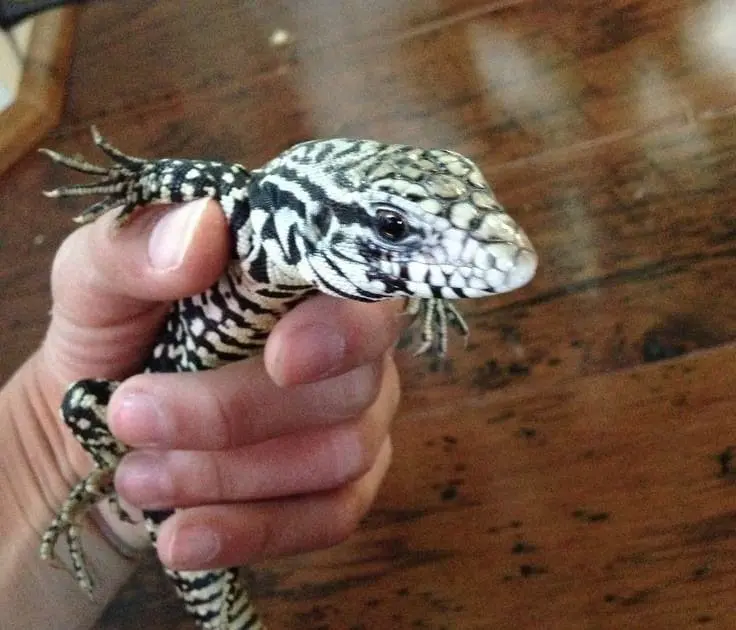Painted turtles for sale
Painted Turtles for sale
The painted turtle (Chrysemys picta) is the most widespread native turtle of North America. It lives in slow-moving fresh waters, from southern Canada to Louisiana and northern Mexico, and from the Atlantic to the Pacific. The turtle is the only species of the genus Chrysemys, which is part of the pond turtle family Emydidae.
Painted turtles are brightly marked. They have a smooth shell. The painted turtle has a relatively flat upper shell with red and yellow markings on a black or greenish brown background. We have some super cute baby painted turtles for sale including eastern painted turtles for sale, baby eastern painted turtle for sale, western painted turtles for sale, western painted turtle for sale online, as well as southern painted turtles for sale. Shop baby painted turtles for sale online here all with a live arrival and full health guarantee like all of our aquatic turtles for sale, and box turtles for sale.
No products found which match your selection.
The African fat tailed gecko species are known as one of the more neat and sophisticated breed of gecko. They’re very much so a pleasure to own and they’re relatively easy to takecare of. They’re one of my highly recommended gecko breeds for brand new owners.
The African fat–tailed gecko diet typically consists of crickets and/or mealworms. They may also readily accept silkworms, waxworms or pinkie mice, but these food items should only be given as a supplement as they are high in fat content.
Feeding: Fat–tail Geckos mainly eat live crickets, mealworms, waxworms, roach nymphs, and silk-worms. Be careful not to feed them anything larger than about 3/4 the size of their heads to prevent choking. Explore our entire african fat tailed gecko care section for more information.
Before purchasing your new african fat tailed gecko for sale, find the right african fat tailed gecko breeder only offering captive bred baby fat tailed geckos for sale.
No products found which match your selection.
Pacman Frog Lighting
Lighting is one of the most important parts of Pacman frog care and a Pacman frog habitat. Most reptiles require ultraviolet lighting to maintain good health. Although Pacman frogs are nocturnal, they do not require ultraviolet lighting, they receive all their D3 from the foods & supplements you provide. If it is part of the habitat design, it is recommended for 12 hours per day. Be sure to use a very low wattage bulb especially if the frog is an albino, as the harsh lighting can damage the albino eyes. The use of a timer will assist in maintaining an accurate schedule of light periods. You can also use a red or blue light for time observation instead as neither will bother the frog or cause any eye damage.
Pacman Frog Habitat
Coco husk, Eco-earth, and fertilizer-free soil are good substrates to use, as Horned Frogs like to burrow and spend much of their time just beneath the surface of the substrate. Paper towels are a cheap alternative for substrate. Fresh water should be supplied daily. A large, shallow water bowl should be provided containing de-chlorinated or bottled spring water. Tap water may be used as long as it has been treated with a de-chlorinating solution such as repti-safe or aqua-safe. These will normally have added calcium which can be beneficial to your frog. Pacman frogs can’t swim so the depth of the water must not go past your horned frog’s head. All species of Horned Frog require some humidity. Lightly misting the terrarium daily with de-chlorinated water in a spray bottle should suffice to keep humidity at the right level for your Horned Frog. All amphibians require somewhere to hide. Make sure your substrate is deep enough for your horned frog to hide in. The ideal temperature for your Horned Frog is a temperature gradient of 75- 82°F. Heat should be provided using an under tank heat mat with an appropriate thermostat. Heat mats should only cover between a third and a half of the wall or floor space to allow your Horned Frog to thermo-regulate. Never use heat lamps or basking lamps for amphibians, as these can cause your Horned Frog to dehydrate. It’s useful to have a small thermometer on either end of the terrarium to check the temperature. One end should be around 24°C and the other around 28°C to ensure that your Horned Frog can thermo-regulate by moving around the tank. Horned Frogs should be kept out of direct sunlight and a low UVB tube is generally a welcome addition to the terrarium. Your terrarium should be cleaned on a weekly basis.
Pacman Frogs for sale
No products found which match your selection.
Pacman Frogs for sale
Cute? Yes. Easy to care for? Yes. Reasonably priced? Yes. Pacman frogs make great pet frogs!
Pacman, or “Horned frogs for sale” come from the damp, humid forests of South America. Their name refers to the fact that the top of their head comes to a point over their eyes and looks like horns. They also have the nickname “Pac-Man Frog,” after the popular video game.
When considering a Strawberry Pacman frog for sale, be sure to only purchase captive bred baby pacman frogs for sale from an experienced Strawberry Pacman frog breeder.
Some of the morphs that we currently breed / carry are: Green pacman frogs for sale, strawberry pacman frogs for sale, camo pacman frogs for sale, albino pacman frogs, apricot pacman frog, apricot pacman frog, green fantasy pacman drog, dragonwing pacman frogs, lemon albino pacman frogs, sunburst pacman frogs and other rare pacman frog morphs for sale.
At CBReptile.com all of our reptiles for sale, including our strawberry pacman frogs for sale are captive bred and NOT wild caught. We have a Biologist ON SITE and offer a Live arrival and FULL 7 day health guarantee on ALL Of our animals. Our guarantee extends to 30 days for all customers who purchase full habitat kits. All of our orders ship via FedEx Overnight in heated or cooled, insulated containers (when needed) and leave our facility at 6:45PM and are on your doorstep the following morning before noon. One Shipping charge of $39.95 covers up to 5 reptiles for sale.
Japanese Cave Geckos for sale
No products found which match your selection.
Japanese cave geckos are beautiful, fast, shy animals native to rocky, wet mountain forests of Japan. They are found on four different islands of Japan: Ie-Jiima, Tonaki-Shima, Aka-Shima, and Tokashiki-Shima. In the wild they are found in and around the mouths of caves located near small moving bodies of water.
Working with Japanese cave geckos for sale is rewarding. They are stunning, fairly docile, and some of the most beautiful pet geckos for sale in the world. As a Japanese gecko breeder, we pride ourselves with working with the best japanese cave gecko breed stock available producing the best japanese cave geckos for sale anywhere.
Tegus for Sale
No products found which match your selection.
Description: The Argentinian tegu can reach an adult size of 4 feet or even longer (including the tail). They have a fairly distinctive red ground color with white and black dots and stripes over the entire body.
| Enclosure: With all the different enclosures available on the market today choosing an enclosure could become quite confusing. We would recommend a simple wooden vivarium with glass sliding front doors. Fitted with a heating system and lighting system as mentioned below they just seem to make the perfect habitat for a pet reptile. They look nice and can be ordered in a colour to match your household furniture. They hold the heat well, are easy to clean and durable. We would not recommend one of the many different glass enclosures on the market today as they are very expensive compared to the wooden equivalent and they do not hold the heat nearly as well. For a fully grown Black and White Tegu they should have a 6ft x 4ft x 3ft enclosure, when these lizards are young they can be kept in a smaller enclosure but they will need upgrading as they grow. |
|
|
| Temperature: Tegus should be maintained at 85 degrees with a basking spot of 100 degrees. You should create a heat gradient by putting your heat source only at one end of the enclosure, this will create a “hot” end and a “cool” end of the enclosure as this will give your animal a choice of temperatures in the enclosure so that he always feels comfortable. We always feel that the safest way is to use a thermostatically controlled heating system. The are many systems on the market today that are perfect for the job in hand. An overhead ceramic element or reptile radiator connected to a temp stat or a pulse stat is one way, or a coloured spot bulb connected to a dimming thermostat is equally as good. Both these systems will provide a very controllable heat source. There are other heaters out on the market such as AHS all in one heaters/thermostat that will also do a great job of heating the enclosure. |
|
|
| Lighting: Argentinian red tegus are diurnal and need exposure to full spectrum UVA and UVB lighting. 12% Arcadia Florescent Tubes are the best choice in UV lighting for a Tegu. |
|
|
| Humidity: These lizards should have humidity levels of 60-80%. This can be maintained by misting the enclosure twice daily, devices such as waterfalls and foggers can also be used in the enclosure to help maintain the adequate humidity levels required. They also require a large water dish to allow them to soak in the water, this will also help to increase the humidity levels in the enclosure. |
|
|
| Substrate: Tegus like to burrow, and need a substrate that is absorbent and easy to clean such as, Kritters Crumble, Orchid Bark etc. |
|
|
| Furnishing: There are lots of furnishings available that are suitable for these lizards. A large water bowl is suitable so that your lizard is able to soak in the water if necessary.Plants and other decor are available to make the enclosure look nice |
| Selecting a Healthy animal: When selecting your new Black and White Tegu its important to check that the animal is in good health and is kept in a clean and adaquate enclosure. Looking around the shop will give you a good idea of how the animals are kept.. If the shop is kept clean and maintained well, the staff are friendly and helpful and the enclosures are kept clean with bright, alert animals you can be sure the animals are healthy.. The staff should be happy to show you the animal and talk you through the up keep and answer any questions you may have. |
|
|
| Temperament: When young these lizards can be very nervous and skittish, but with perseverance and regular handling when they are young they can become very docile animals. As these lizards grow larger they will become more docile. |
|
|
| Shedding: These lizards will shed their skin throughout their lives. You will notice that the colours of your Tegu will dull at the start of the shedding process and the skin will start to peel away in pieces. Humidity in the enclosure can be increased prior and during this period to aid this process and you will notice your lizard bathing more frequently. |
|
|
| Handling: Handling is recommended when these lizards are young as they can be quite nervous and skittish, 10-15 minute periods of handling is adequate to get them used to human contact. These lizards rarely bite but they may squirm in your hands trying to break loose. If handled regularly when young these lizards can become very docile and make fantastic pets. |
|
|
| Diet: Tegus are typically considered omnivores, although many captive diets do not reflect this tendency. In addition to an assortment of appropriately sized insects (crickets, mealworms, waxworms, roaches), various high calcium fruits and vegetables should be regularly offered. Willingness to accept fruits will vary from animal to animal, but even a small amount can add a lot of variety and essential nutrients to the tegu diet. Rodents may be offered, though sparingly, as they tend to be high in fat, and tegus are simply not designed to digest large quantities of fur. Instead, a balanced dietary supplement can be created using raw, ground turkey, whole eggs (with shell), and bone meal or an equivalent calcium/vitamin supplement. Tegus grow quickly and have very active metabolisms. As such, regular feeding is necessary. There is no rule of thumb as to exactly how much to offer, but tegus should have a filled-out appearance when they are full. Start by offering young tegus food daily and adjust quantity and frequency as needed. Calcium and vitamin supplementation is especially important for young tegus. A high quality calcium supplement complete with vitamin D3 should be lightly dusted on all food every other feed. |
|
|
| Water: Fresh water should be provided daily. |
|
|
| Maintenance: The enclosure should be spot cleaned every day. Simply pick up any unwanted debris or feaces this will help prevent any bacteria build up in the enclosure. Every 4 – 6 weeks we would recommend that the enclosure is completely stripped out. Once you have removed your animal to a safe alternative warm temporary home, remove all furnishings and substrate, disinfect the enclosure totally making sure you get into all the corners. Disinfect all furnishing and rinse, replace substrate with new and then replace everything back into the enclosure and heat back to correct temperature before replacing your animal. |
|
|
| Sexing: Sexing Red Tegu’s is a very hard thing to do. Males do get bigger than the females. Males develop large jowls underneath the chin as they mature. |
|
|
| Breeding: To successfully breed RedTegu’s you must hibernate both the Male and the Female through the winter season. I would say that the clutches can be anywhere between 10 to 70 eggs! Once she lays the eggs, they should be removed for incubation. Be careful not to rotate the eggs as they are removed. Place them in an incubator, with a temperature of 86 to 90 degrees. Now the waiting begins. Keep monitoring the temperature and humidity. also, check the eggs very gently by touch, to make sure they have a leathery feel, not too hard nor too soft. I would recommend spending extra money on a quality thermostat. The eggs will incubate between 45 and 60 days before hatching. Provide Vermiculite as a substrate for the eggs in the incubator. |
